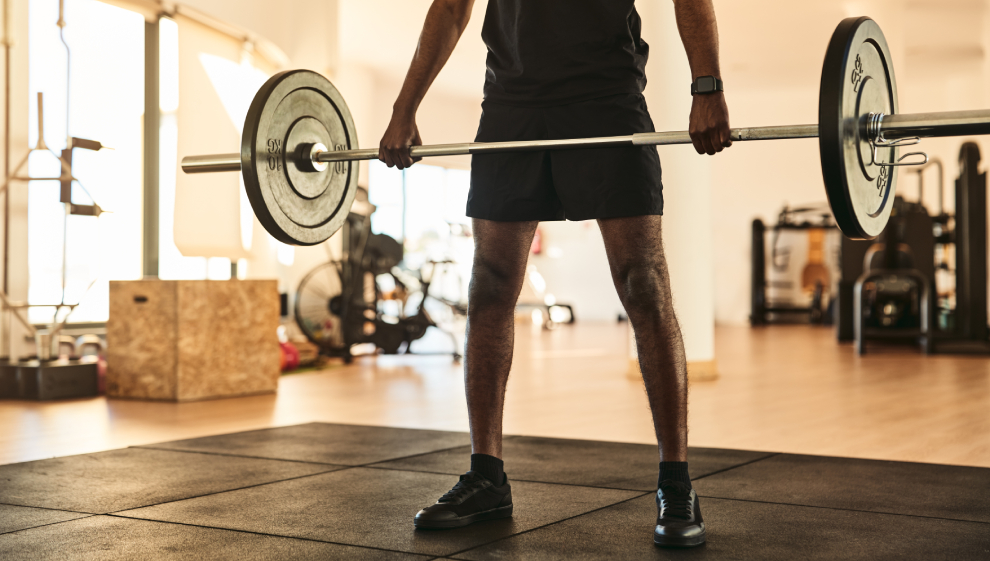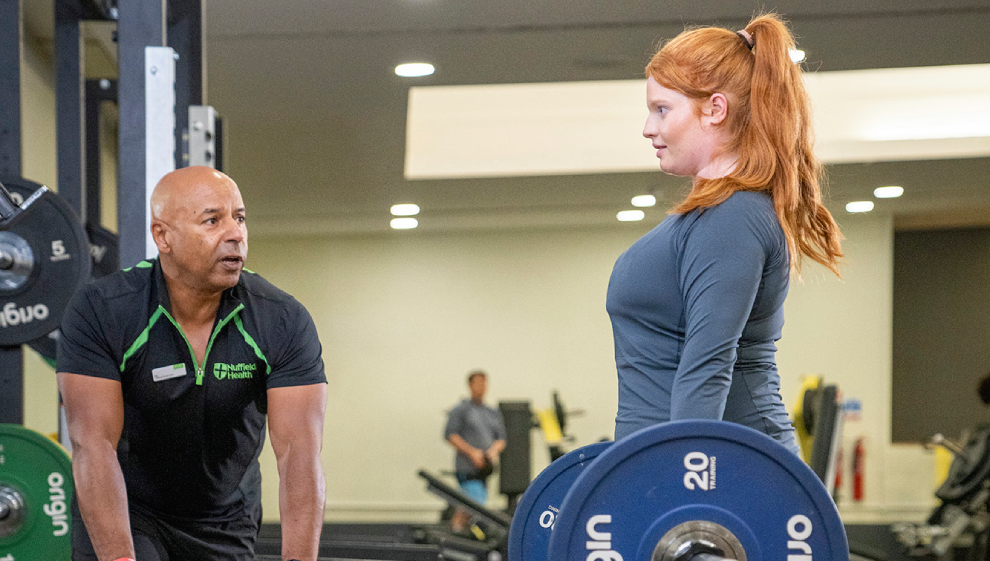Weightlifting for beginners | Five exercises for building muscle
- Overview
Whether it’s your first time in the gym or you’re looking to mix up your routine with a new lift, form should always be your number one priority.

Weightlifting for beginners
When you’re starting out, it’s good to learn a selection of lifts that can be added into your routine. Not only will it mean that you’re developing muscles in a safe and balanced way, but you’ll also futureproof your workouts with plenty of options if the equipment you need is already being used.
How to pick your lifts
When you start training in the gym, the exercise options can be overwhelming. A simple search online can bring up dozens of movements all claiming to be the best for different muscle groups. The good news is that you only need a few exercises to build your workouts.
The five lifts we’re talking about today are the deadlift, bench press, squat, bicep curl and bent over barbell row. These lifts are great because they give you the basis for a comprehensive workout that you can develop as you grow in confidence and ability.
There are multiple different variations of these exercises, so you might find an alternative that feels and works better for you.
Working with a personal trainer

If you don’t know where to start and you’re concerned about injuring yourself in the gym, enlisting the help of a personal trainer is a great place to start.
Personal trainers are happy to answer your questions and walk you through the correct way to perform any exercise. Working with a personal trainer means them understanding how your body works with a view to achieving your goals in the safest way possible.
Before you start
The safest and most rewarding way to lift weights is to perfect your form first. While you’re practicing your form, use a weight that you can lift comfortably. From that base you can then continue to increase your weights as you get stronger.
Working with a personal trainer is a great way to ensure you’re lifting a weight that is both safe and challenging for you.
1. Dumbbell Curl
Difficulty: Beginner
Area targeted: Biceps
Equipment: Two dumbbells
Alternative: Barbell curl
The dumbbell curl is an essential lift for building strong arms. A great exercise for beginners, the dumbbell curl isolates the bicep and can be substituted for a barbell curl if that exercise is more comfortable. As with all exercises, start light and perfect your form before lifting heavier weights.
Start with a stable base with your feet positioned a hips width apart and your knees gently braced to support your upper body.
2To begin the movement, brace your core and curl the dumbbells up towards your collar bone, feeling your biceps squeeze.
3Make sure you keep your elbows tucked in close to your body, in order to fully isolate the bicep.
2. Deadlift
Difficulty: Beginner
Area targeted: Glutes, quads and abdominals
Equipment: Barbell and weights
Alternative: The Romanian deadlift
When performed correctly, the deadlift is a safe and secure way of targeting the glutes, quads and abdominal muscles. Designed to strengthen these core areas, the deadlift can help improve hip stability, make you more mobile and teach your muscles to work in tandem when you exercise.
With your feet hip-width and your toes under the bar, stand straight with your shoulders back and chest up so your spine stays flat.
2Bend your knees and grip the bar with your arms on the outside of your knees.
3Look forward and lift the bar while making sure your back stays straight throughout. You should feel your glutes squeezing on the way up.
4Reverse the action on the way down, keeping the barbell close to your thighs.
3. Squat
Difficulty: Beginner
Area targeted: Quads, calves, glutes and hamstrings
Equipment: Barbell and weights (optional for beginners)
Alternative: Kettlebell squat
Squats are a great way to build leg and core strength. With so many alternatives and ways to ease yourself in, the squat is also a good exercise for improving mobility. Squats are great for beginners because you don’t have to use any weight to practise your form.
For the purposes of weightlifting, we are going to be performing the squat using a weighted barbell, although you can start by just using an empty bar. This helps you get used to the movement without the risk of accident or injury. If you’re starting with weights attached, make sure you use a squat rack.
Place the barbell across the shoulder blades with your hands gripping the bar just outside them.
2Your feet should be comfortably apart, with your chest out and shoulders back.
3When the movement starts, your hips go back and down so your thighs are parallel to the ground.
4To raise the bar again, the power comes from your hips and glutes. If you’re driving upwards correctly, you should feel your glutes squeeze.
4. Dumbbell Chest Press
Difficulty: Beginner
Area targeted: Chest and pectoral muscles
Equipment: Bench and two dumbbell
Alternative: Dumbbell chest fly
To perform the dumbbell chest press, you’ll need two dumbbells and a bench. Maintaining correct posture and form is vital with this lift, as you’re using two independent weights instead of a single barbell – make sure your form is mirrored to avoid imbalance.
To start, make sure your bench is flat and sit down with your weights placed on either thigh.
2Keeping your weights close to you, lay back and twist your palms out so both weights are in line with your chest.
3Press the dumbbells up slowly. You should feel the muscles in your chest working as the weights are raised.
4Pay special attention to your abdominals. They should be squeezed nice and tight to ensure your lower back stays flat in position.
5. Bent Over Barbell row
Difficulty: Beginner
Area targeted: Back
Equipment: A barbell and weights (optional for beginners)
Alternative: Suspended row
The bent over row is a great way to activate the muscles in your back. If you work at a desk or regularly wake up with pain across the shoulders, this is perfect for strengthening muscles that often go unused throughout the day due to poor posture or a sedentary routine.
Use the same overhand grip you use for a deadlift. Feet should be hip-width apart, with the chest out and shoulders slightly back for a straight spine.
2Lean downwards at the hip, keeping your back flat and your arms straight. Focus on the ground around a metre in front of you.
3Drive the barbell up into your navel, keeping your core tight and your legs gently bent at the knee – you should feel your shoulder blades activating.
If you're recovering from an injury
If you’re recovering from an injury, it’s advised you see a physiotherapist before you start a new exercise plan.
This helps lower the risk of you aggravating an existing injury or causing an old injury to resurface.
For more exercise inspiration
Check out our series of dumbbell exercises, barbell exercises, explosive leg/glute workouts and strength-focused core/upper body workouts.
Last updated Thursday 10 August 2023
First published on Thursday 10 August 2023
